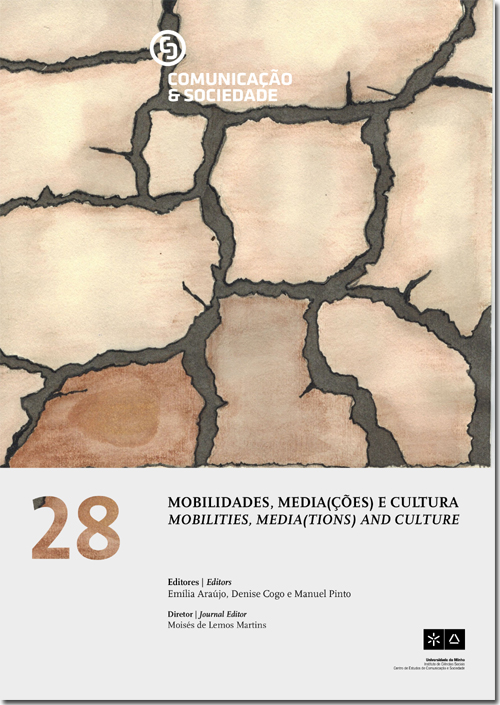Snail tecnologies and cultures in the age of mobility: mobile communication and identities in the Shuar time/space
DOI:
https://doi.org/10.17231/comsoc.28(2015).2284Palavras-chave:
Time, space, mobile phone, Shuar, identitiesResumo
In mobile ontology and in the Shuar dynamic, cyclic, one-dimensional worldview, time and space flow simultaneously (de Salvador y Martínez, 2015b; Martínez, & de Salvador, 2015; Martínez et al., 2015). Authors such as Ling and Haddon emphasised the influence of mobile phones on human movement patterns, pointing out that they offer “freedom of contact”, given their nomadic nature, and the possibility to free ourselves from the spatial context and enter a space of communicative flows, where only time exists. The Where - as a Shuar would say - that is, Space, marches on together with time, in a global spatial-temporal dimension. Since mobile phones draw us closer to a nomadic life, turning us into snails (Fortunati, 2005) that carry a whole network of relationships in the back, an analysis of the uses of mobile phones (from this point of view) by a nomadic people such as the Shuar seems particularly interesting. The endlessly spiralling snail metaphor, which the Shuar use to describe their worldview, and the characterisation of nature resemble today’s mobile technology we all carry about. This essay is intended to emphasise the worldviews of the Mobile Age and the Indigenous, Shuar Age so as to analyse the similarities and differences in the spatial-temporal conception, as well as its impacts on identity.Downloads
Não há dados estatísticos.
Downloads
Publicado
28-12-2015
Como Citar
Agra, S. de S., & Suárez, Y. M. (2015). Snail tecnologies and cultures in the age of mobility: mobile communication and identities in the Shuar time/space. Comunicação E Sociedade, 28, 323–335. https://doi.org/10.17231/comsoc.28(2015).2284
Edição
Secção
Mobilidades, Culturas e Universos Tecnológicos
Licença
Os autores são titulares dos direitos de autor, concedendo à revista o direito de primeira publicação. O trabalho é licenciado com uma Licença Creative Commons - Atribuição 4.0 Internacional.












